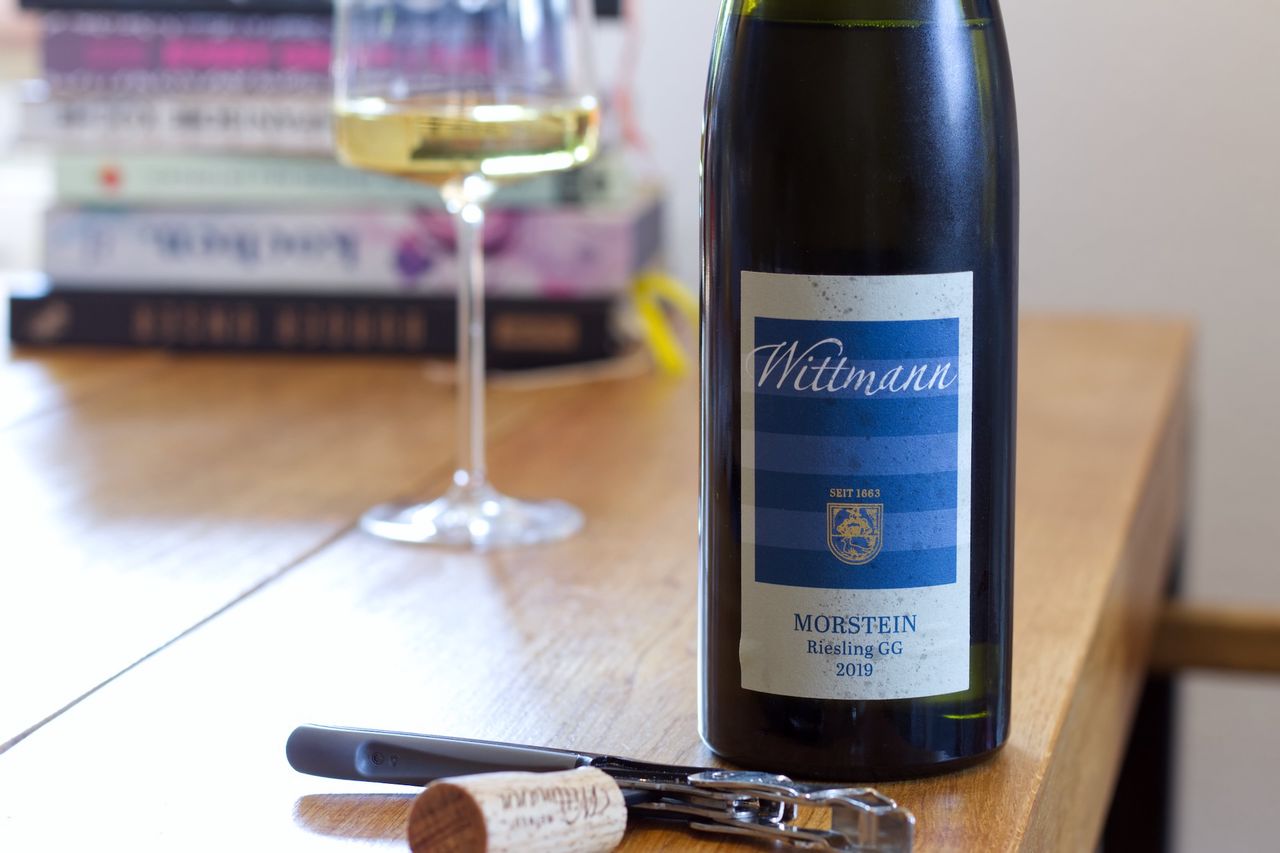Wittmann - Morstein 2019
We are staying in Rheinhessen and drinking a 2019 Morstein Riesling from Weingut Wittmann.

Admittedly, we are not straying particularly far geographically. But it just fits so well, and that’s why we are not only staying another week in Rheinhessen, we are even staying in Westhofen. For our Maxime Open finale at Mundart in Saulheim, we had a bottle of 2016 Chardonnay Reserve from Wittmann. And because that was really good and I’d already had my eye on this Riesling once or twice recently, this bottle now has to face its fate. For the thematic arc, and for myself. It did not get as much time as the Chardonnay on the bottle, but you can’t have everything. And 2019 is six years ago by now, after all.
Today, Riesling drinkers from around the world know the Westhofener Morstein. And dry Riesling from Rheinhessen is sought after and, from the right grower in the right site, fetches top prices well beyond my pain threshold. It wasn’t always like that with dry Riesling and the recognition of its quality, and one who has long worked to achieve the current state is Philipp Wittmann. The Wittmann estate was quick to make the switch to organic viticulture and has been certified organic since the late 1980s. Philipp Wittmann is part of the “Message in a Bottle” initiative, founded in 1992, which aims above all to encourage exchange among wine estates and thus advance quality. Great, dry wines. That was the goal, and still is. Since 1999, bottles from the estate have carried the grape eagle on the neck, which means they are part of VDP. Today, around 30 hectares are farmed biodynamically. Riesling dominates the area and at the top, at least if you leave out auction wines, stands the Morstein. A south-facing slope with limestone in the soil. The grapes ferment spontaneously and are then matured in large, used wooden casks into what ultimately ends up in the bottle.
A bit young perhaps, I think at first. Because not much happens at the start. Yellow fruit, a (maybe also yellow) rubber dinghy floats by, at least if you inhale for a longtime, behind that, it gets firm and stony. Even a bit medicinal. This is deep, complex but so tightly packed into such a small space that it’s almost impossible to get at. A bit of artificial melon, some stone fruit, and not even a hint of maturity. The acidity, on the other hand, is fully present, fruity, juicy, with drive and structure behind it, and a minimal bitterness far back on the tongue. Long, truly long, it lingers and lingers, becoming creamier and more yellow in aroma as it goes. The mix of fruity acidity and underlying texture drinks beautifully. Luckily, the Riesling stays on the palate for so long, otherwise the bottle would have trouble staying full.
Air already helps on the first evening, to bring what you smell in line with the spectacle on the tongue. The aroma doesn’t really change, but instead of being in a tiny, tiny space, it opens up. And there’s more. More fruit, more sweetness in the nose, more charm. Still, the nose can’t quite keep up with what’s happening on the palate. Sometimes GGs are more of an intellectual experience, something you have to drink your way into them, if you manage it at all. Not here. From the very first sip, you’re fully involved.
The fridge takes the restraint of the wine away. The second evening starts off intense, dense, with yellow fruit and lots of stone fruit. Herbs, stone, the medicinal note. Not only has the wine retained its acidity, it seems it’s even gained a bit more drive. Cool, juicy, extremely long, with that little bitterness way at the very back. But that doesn’t bother, rather, it brings tension to the palate. The rubber dinghy has almost vanished now, the number of flavors has decreased, but their intensity has massively increased. More focus on day two, more uncompromising, straighter. Herbs, stone fruit, stone, and lots of fruity acidity. It’s good, very good, in fact, and will stay that way for a long time.
Each glass gives a tiny glimpse of the future maybe, just before it’s empty, at that moment when you’ve swirled a lot of oxygen through the wine. It becomes creamier, softer, more charming. And once you refill, the acidity pushes forward again. Honestly, this would stay exciting for several more days, but for that, a regular-sized bottle is, once again, much too small. This is my first Morstein, hopefully, not my last for a long time.